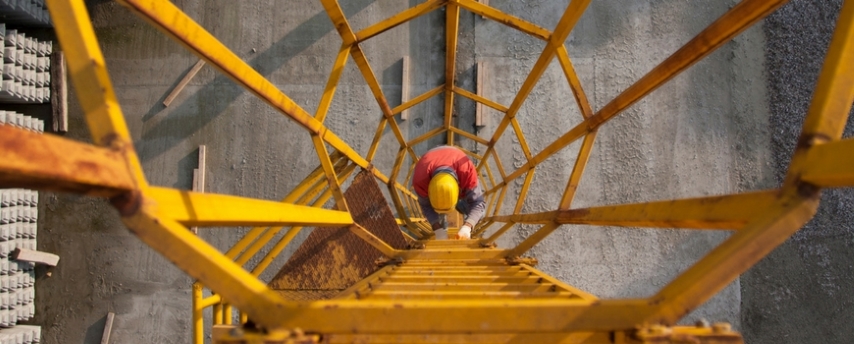Working at height isn’t always a safe thing. Often, lack of adequate access equipment causes employees to find sub-optimal methods of reaching high areas, such as warehouse shelvings. This can dangerous, reckless, but also easily avoided.
There is a variety of equipment available on the market designed for work at height, including platform work cages. Also known as forklift cages, work platforms have been designed to be used in a conjunction with a forklift truck to elevate individuals so that they can complete jobs at height. The person being elevated has no control of the platform – all movements are controlled by the truck operator. Some models allow the individual in the basket itself full control, but they are pretty rare.

Benefits of Platform Work Cages
One of the greatest benefits of platform work cages is the easy and handy way they offer to reach high areas within a workplace. Workers often need a temporary means for working at height. A platform work cage is a great solution for non-routine or urgent tasks for which it’s impractical to purchase or hire in purpose-built access equipment, as well as other jobs that would otherwise be done using less safe means.
Because forklifts are mainly intended for lifting materials and not people, a guide has been created to state the occasions up which the use of these work platforms is acceptable. Not complying with the guidance may leave your business vulnerable to safety failures and liable for accidents.
Example of occasions when the use of platform work cages are acceptable include:
- Replacement of light fittings in high-rise warehouses if the task is not performed out as part of periodic maintenance operations.
- Tasks that would otherwise be carried out using less safe means of access such as ladders due to the impracticality of hiring in purpose-designed personnel due to the short duration and occasional nature of the task, for example, clearing a blocked gutter.
- Replacing damaged roof lights or assessing high-level damage to racking suspected that could represent an immediate risk.
How to Choose a Platform Work Cage
When shopping for a platform work cage for your facility, there are some features you’ll want to look for to ensure the safety of your employees.

Ultimate Protection
To keep you and your employees safe, you will want to get a heavy-duty steel cage. The cage should be reinforced with guardrails and a non-slip floor to help prevent falls and injuries. A mesh safety screen will help keep you and your employees securely inside. Double chains can make getting in and out easier.
Compactible With Forklifts and Loaders
Make sure the work platform cage you choose can be used with the kind of forklift or pallet loader you have. To ensure maximum security and stability the fork sleeves featured on the bottom of the platform should run the entire length of the cage and the cage should be able to be secured to the forklift truck using a safety chain.
Easy Storage
Collapsible platforms allow easy storage. Collapsible platforms can be folded by simply sliding the inside wall’s locks inward and then carefully lowering all walls inward to completely fold the cage down. In addition to being easy to store, collapsible cages are also easy to assemble and operate and there are no tools required.
How to Work Safely With a Platform Work Cage
There are a few steps you need to follow when using a platform work cage. The first one is to ensure a suitable truck, compatible with the platform attachment is used to lift the cage. The best way to find this out is to consult with the truth manufacture or supplier. The platform must be securely attached to the truck, the equipment is stable all the time and the individuals in the platform cannot reach hazardous moving parts.

The second step is to make sure that the weight of the platform together with its load (be it people, materials, tools, etc)is not more than half of the actual capacity of the truck. The actual capacity includes the capacity of the truck when it’s equipped with any specific attachments. For example, when carrying out maintenance work, any items that are placed on the platform will add to the overall weight. This means the platform must be properly locked onto the truck and the fork arms on the forklift should extend fully into the fork pockets of the basket attachment.
The third step is to make sure everyone involved in the process (from the truck operator to the individuals on the platform) is well trained. This includes not only knowing how to operate the equipment but also being aware of what needs to be done in the case of an emergency as well as the risks associated with the work platform leaning out of.
